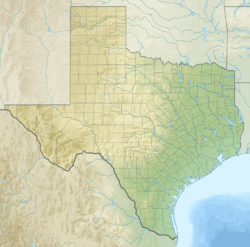Pershing House facts for kids
Quick facts for kids |
|
|
Pershing House
|
|
|
U.S. Historic district
Contributing property |
|

Pershing House
Fort Sam Houston |
|
| Location | Staff Post Rd., Fort Sam Houston, San Antonio, Texas |
|---|---|
| Architect | Alfred Giles |
| Part of | Fort Sam Houston (ID75001950) |
| NRHP reference No. | 74002058 |
| Added to NRHP | July 30, 1974 |
The Pershing House is located on Fort Sam Houston, in the Bexar County city of San Antonio in the U.S. state of Texas. It was placed on the National Register of Historic Places listings in Bexar County, Texas on July 30, 1974. Although this Commanding General housing was actually constructed in 1881, it has been referred to by its current name since John J. Pershing served as the base Commandant in 1917. Architect Alfred Giles was contracted to design the 10,830 square feet (1,000 m2), two-story house. In various phases during the 20th century, improvements have included the installation of electricity and air conditioning. The porch is now enclosed, and the plumbing upgraded.
At one point in its existence, Fort Sam Houston was the largest Army post within the United States. The commanding officers who have called the house a home were some of the most accomplished leaders in the United States Army prior to their being given charge of the base. Numerous Medal of Honor recipients have lived in the house. Almost half of the base commandants were buried in Arlington National Cemetery. Pershing had been transferred to Fort Sam Houston from Fort Bliss, following his participation in the Pancho Villa Expedition. He would only be at Fort Sam Houston for two months before being given charge of the American Expeditionary Forces in Europe. Pershing held the highest rank ever given an American army officer, and was one of the architects of the Treaty of Versailles.
The names of the house's residents appear on a plaque presented to Fort Sam Houston by Julia Cotton White, wife of base commandant General Isaac D. White. The plaque continues to be updated as an historical record of who lived there. Mrs. White died in 1989.
Residents of Pershing House
| Residency | Name | Image | Birth–Death | Burial | Notes | Refs |
|---|---|---|---|---|---|---|
| 1881–83 | Brigadier General Christopher C. Augur | 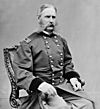 |
(1821–1898) | Arlington National Cemetery | American Civil War veteran | |
| 1883 | Brigadier General Ranald S. Mackenzie | 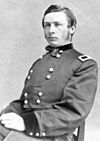 |
(1840–1899) | West Point Cemetery | Red River War (1874), retired from the Army six months after arriving at Fort Sam Houston. | |
| 1883–84 | Lieutenant General John M. Schofield | 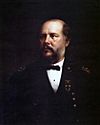 |
(1831–1906) | Arlington National Cemetery | Medal of Honor July 2, 1892, for action at Wilson's Creek, Missouri, August 10, 1861. Later served as U.S. Secretary of War, Schofield Barracks named in his honor. | |
| 1884–1892 | Brigadier General David S. Stanley | 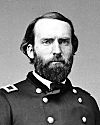 |
(1828–1902) | United States Soldiers' and Airmen's Home National Cemetery | Medal of Honor March 29, 1893, for action at Franklin, Tennessee November 30, 1864 | |
| 1892–95 | Major General Frank Wheaton | 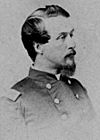 |
(1833–1903) | Arlington National Cemetery | American Civil War veteran | |
| 1895–97 | Major General Zenas R. Bliss | 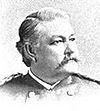 |
(1835–1900) | Arlington National Cemetery | Medal of Honor awarded December 38, 1898, for action during the American Civil War at Fredericksburg, Virginia on December 13, 1862 | |
| 1897–98 | Major General William Montrose Graham, Jr. | 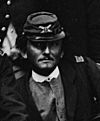 |
(1834–1916) | Congressional Cemetery | American Civil War veteran and nephew of George Meade | |
| 1899–1901 | Brigadier General Chambers McKibbin | (1841–1918) | Arlington National Cemetery | American Civil War veteran | ||
| 1902–1904 | Brigadier General Frederick Dent Grant | 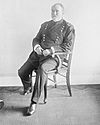 |
(1850–1912) | West Point | Spanish–American War veteran | |
| 1904–1906 | Brigadier General Jesse M. Lee | Served in the Philippines | ||||
| 1906–1907 | Brigadier General William S. McCaskey | (1843–1914) | San Francisco National Cemetery | Informed George Armstrong Custer's widow about the Battle of the Little Bighorn | ||
| 1907–1910 | Brigadier General Albert L. Myer | |||||
| 1910–1911 | Brigadier General Ralph W. Hoyt | |||||
| 1911–1912 | Brigadier General Joseph Wilson Duncan | (1853–1912) | Arlington National Cemetery | Participated in the capture of Mount Dajo, Philippine Islands | ||
| 1913–1915 | General Tasker H. Bliss | 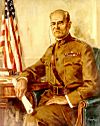 |
(1853–1930) | Arlington National Cemetery | U.S. Army Chief of Staff, multiple awards and citations from multiple countries, USS Tasker H. Bliss (AP-42) named in his honor | |
| 1915–1917 | Major General Frederick Funston | 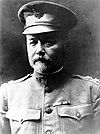 |
(1865–1917) | San Francisco National Cemetery | Medal of Honor awarded February 10, 1900, for action Rio Grande de la Pampanga, Luzon, Philippine Islands, 27 April 1899 | |
| 1917 | General of the Armies of the United States John J. Pershing | 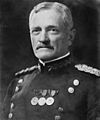 |
(1860–1948) | Arlington National Cemetery | Multiple international awards and recognitions, received the highest rank ever given an American army officer. Helped frame the Treaty of Versailles | |
| 1917 | Major General James Parker | (1854–1934) | Saint Marys Episcopal Churchyard | Medal of Honor awarded March 8, 1902, for action at Vigan, Luzon, Philippine Islands, 4 December 1899. | ||
| 1917–1918 | Major General John Wilson Ruckman | (1858–1921) | West Point | Distinguished Service Medal awarded 1926 for service during World War I | ||
| 1918 | Major General Willard Ames Holbrook | 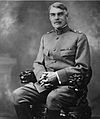 |
(1860–1932) | Arlington National Cemetery | Distinguished Service Medal awarded 1919 for action at the Mexican–American border | |
| 1918–1919 | Major General DeRosey Carroll Cabell, Sr. | (1861–1924) | San Francisco National Cemetery | Distinguished Service Medal for service during the Mexican Border Wars (1916–1918) | ||
| 1919–1921 | Major General Joseph T. Dickman | 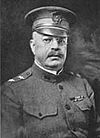 |
(1857–1927) | Arlington National Cemetery | Multiple awards, USS Joseph T. Dickman (APA-13) named in his honor | |
| 1921–1922 | Chief of Staff of the U.S. Army John L. Hines |  |
(1868–1968) | Arlington National Cemetery | Multiple awards and recognitions; May 5, 2000, the United States Postal Service Distinguished Soldiers, a set of four stamps which featured Hines, Audie Murphy, Alvin York and Omar Bradley | |
| 1922–1924 | Major General Edward Mann Lewis |  |
(1863–1949) | San Francisco National Cemetery | Distinguished Service Medal awarded 9 July 1919 for service during World War I Spanish–American War (Cited for Gallantry at the Battle of El Caney), The Philippines, United States occupation of Veracruz, Commanded the 8th Corps Area and the Hawaiian Department after WWI | |
| 1924, 1925–1928 | Major General Ernest J. Hinds | (1864–1941) | Fort Sam Houston National Cemetery | USS Ernest Hinds named in his honor | ||
| 1924–1925 | General Charles Pelot Summerall | (1867–1955) | Arlington National Cemetery | Multiple awards, Chief of Staff United States Army | ||
| 1928 | Major General Thomas Quinton Donaldson, Jr. | (1864–1934) | Arlington National Cemetery | Inspector General, instructor of Military Science | ||
| 1928–1930 | Major General William Lassiter | Distinguished Service Medal for service in World War I, Silver Star Citation for service in the Spanish–American War | ||||
| 1930–1933 | Major General Ernest B. Winans |  |
(1869–1947) | Distinguished Service Medal for his performance World War I in commandof the 64th Infantry Brigade, 32nd Division, 1st Army Corps, of the American Expeditionary Force | ||
| 1933–1934 | Major General Johnson Hagood | 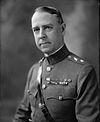 |
(1873–1948) | Magnolia Cemetery | World War I veteran whose memoirs were published as Caissons Go Rolling Along | |
| 1936 | Major General Frank Parker | 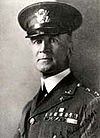 |
(1872–1947) | Commander, 8th Corps Area, Fort Sam Houston, Tex., March–Sept 1936. Retired in 1936 | ||
| 1936–1940 | Lieutenant General Herbert Jay Brees | 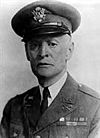 |
(1877–1958) | Fort Sam Houston National Cemetery | Distinguished Service Medal awarded 1919 for service in World War I, Silver Star Citation awarded 1922 for action in France September 27–28, 1918 | |
| 1941–1942 | General Walter Krueger |  |
(1881–1967) | Arlington National Cemetery | World War II Commander Sixth United States Army in the South West Pacific Area; Walter Krueger Middle School named in his honor. | |
| 1942–1943 | General Courtney Hodges | 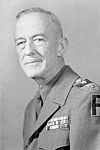 |
(1887–1966) | Arlington National Cemetery | World War II Commander First United States Army in Northwest Europe, multiple awards | |
| 1944 | General William Hood Simpson | 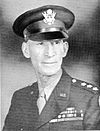 |
(1898–1990) | Arlington National Cemetery | World War II Commander U.S. Ninth Army in northern Europe, multiple awards | |
| 1944–1945 | General John P. Lucas | 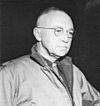 |
(1890–1949) | Arlington National Cemetery | A commander of VI Corps (September 1943 – February 1944) during the Italian Campaign of the Mediterranean Theater of World War II, multiple awards and recognitions | |
| 1945 | Lieutenant General Alexander Patch | 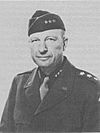 |
(1889–1945) | West Point Cemetery | Commanded both the U.S. Army and the United States Marine Corps forces during the invasion of Guadalcanal, and the Seventh Army in Operation Dragoon (the invasion of southern France). Died November 1945 at Brooke General Hospital | |
| 1946–1947 | General Jonathan M. Wainwright |  |
(1883–1953) | Arlington National Cemetery | Medal of Honor awarded September 19, 1945, for March 12 to May 7, 1942 service in the Philippines | |
| 1947–1949 | 4-star General Thomas T. Handy | 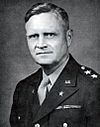 |
(1892–1982) | Arlington National Cemetery | Deputy Chief of Staff, United States Army | |
| 1949–1952 | General LeRoy Lutes | 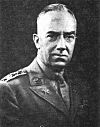 |
(1890–1980) | Arlington National Cemetery | Dwight D. Eisenhower's General Staff as Director of the Service, Supply and Procurement Division, Distinguished Service Award for service 1962–1966 | |
| 1952–1953 | General William M. Hoge | 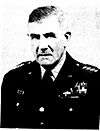 |
(1894–1979) | Arlington National Cemetery | Directed the construction of the 1,519-mile (2,450 km) ALCAN Highway in nine months, commanded the Provisional Engineer Special Brigade Group in the assault on Omaha Beach | |
| 1953 | General John E. Dahlquist | 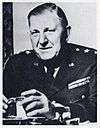 |
(1896–1975) | Arlington National Cemetery | World War I division commander, multiple awards and recognitions | |
| 1953–1955 | General Isaac D. White | 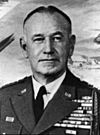 |
(1901–1990) | Unknown | Commander, U.S. Army Pacific | |
| 1955–1958 | Lieutenant General John Howell Collier |  |
(1899–1980) | Fort Sam Houston National Cemetery | A commander of 2nd Armored Division units in World War II and as the Army's Chief of Armor. | |
| 1958–1959 | General Guy S. Meloy, Jr. |  |
(1903–1964) | Arlington National Cemetery | Ccmmander of all U.S. forces in Korea during the Cold War | |
| 1959–1961 | Lieutenant General Edward Thomas Williams | 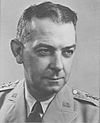 |
(1901–1973) | Fort Sam Houston National Cemetery | Chief of artillery for the Third United States Army in Europe during World War II, commander of the United States Army Field Artillery Center | |
| 1961–1962 | Lieutenant General Donald Prentice Booth | 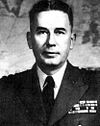 |
(1902–1993) | Arlington National Cemetery | Commanding General of Fourth Army 1961–1962. Retired as Lieutenant General on February 28, 1962 | |
| 1962–64 | Lieutenant General Carl H. Jark | (1905–1984) | Fort Sam Houston National Cemetery | Distinguished service medal for service February 1952 – July 1964 | ||
| 1964–66 | Lieutenant General Robert Wesley Colglazier, Jr. | (1904–1993) | Fort Sam Houston National Cemetery | Distinguished Service Medals for service July 1959 – July 1964 and for service August 1964 – January 1966 | ||
| 1966–1967 | Lieutenant General Thomas W. Dunn | (1908–1983) | West Point | Distinguished Service Medal for service in Vietnam (February 1966 – June 1967) | ||
| 1967–1968 | Lieutenant General Lawrence J. Lincoln | (1909–2000) | Arlington National Cemetery | Three Distinguished Service Medals, one for service in World War II, two for service in Vietnam (August 1964 – June 1967) and (July 1967 – July 1968) | ||
| 1968–1971 | Lieutenant General Harry H. Critz | (1912–1982) | Fort Sill Post Cemetery | Distinguished Service Medal for service in the Vietnam War; Legion of Honor and Bronze Oak Leaf Cluster for service in the Korean War. | ||
| 1971 | Lieutenant General George G. O'Connor | |||||
| 1971 | 4-star General George V. Underwood, Jr. |  |
(1913–1984) | Fort Bliss National Cemetery | Army Distinguished Service Medal awarded for service in Vietnam July 1960 to January 1966 | |
| 1971–1973 | Lieutenant General Patrick F. Cassidy | (1915–1990) | Fort Sam Houston National Cemetery | Distinguished Service Cross awarded for action in France on June 11, 1944 |


